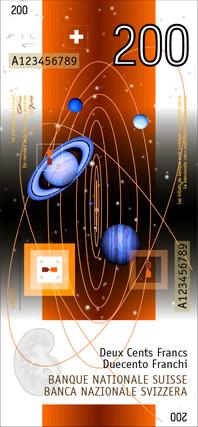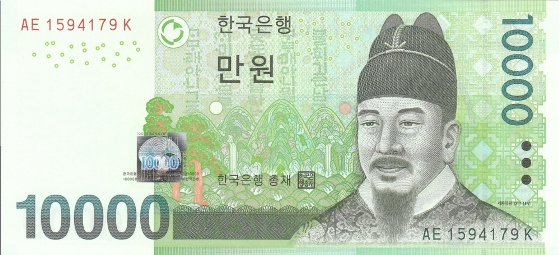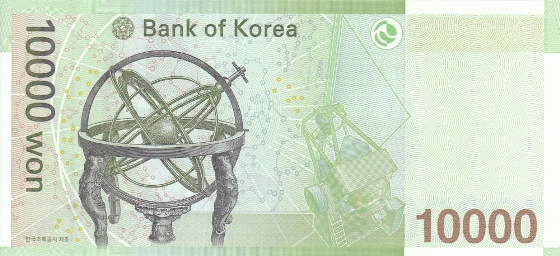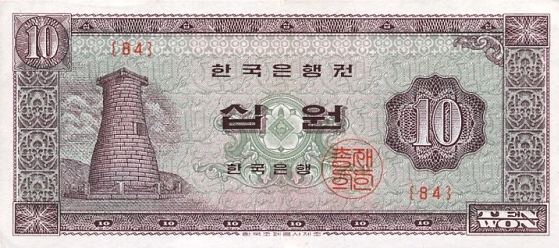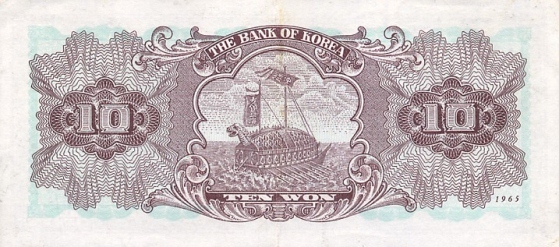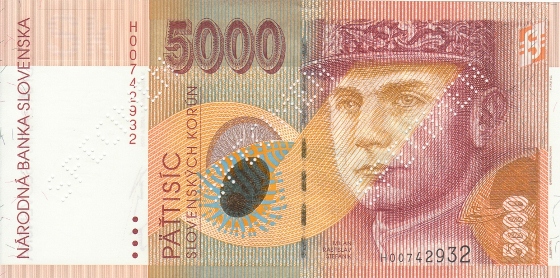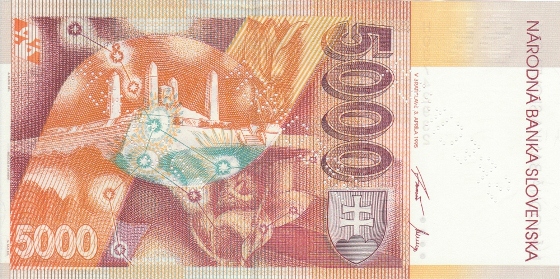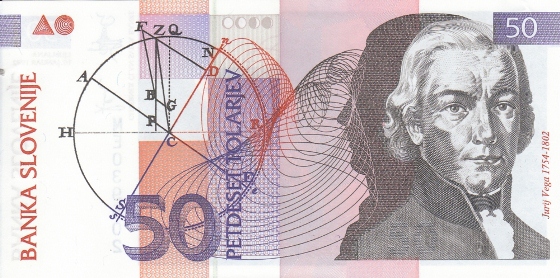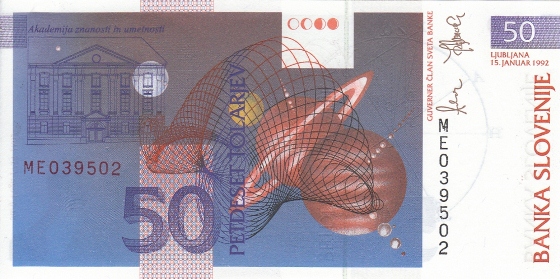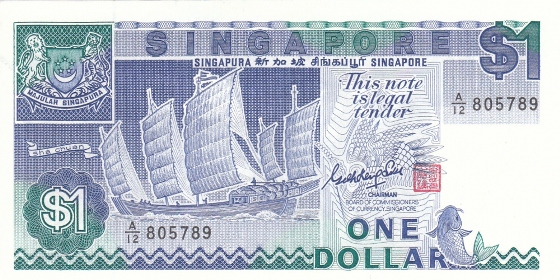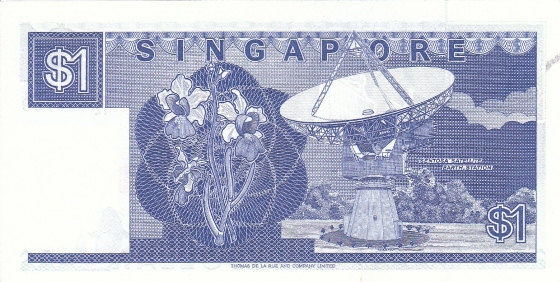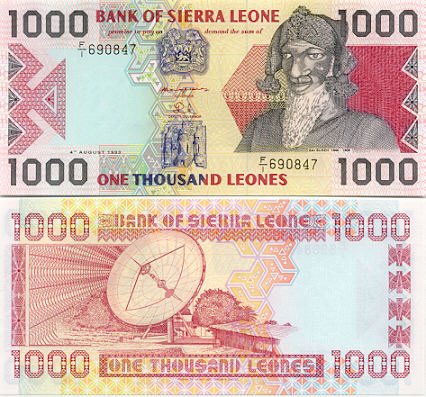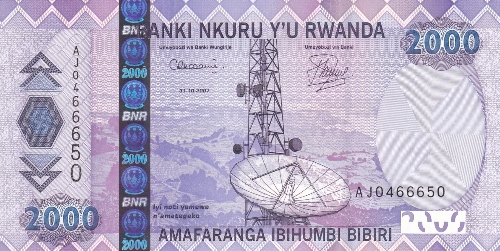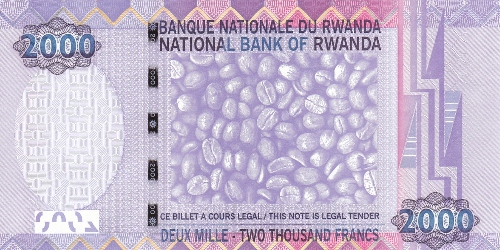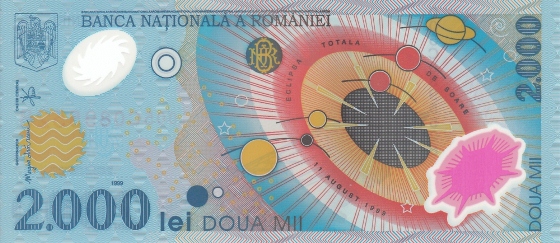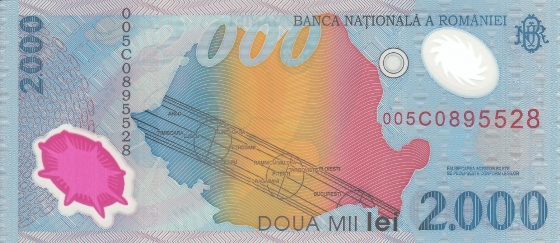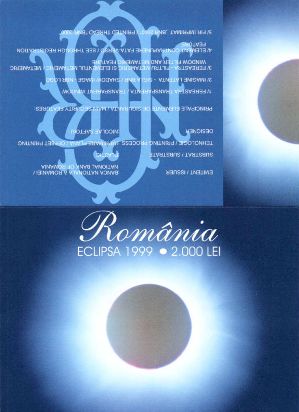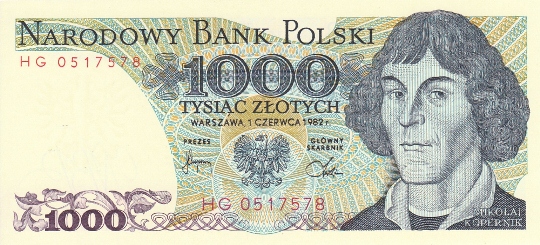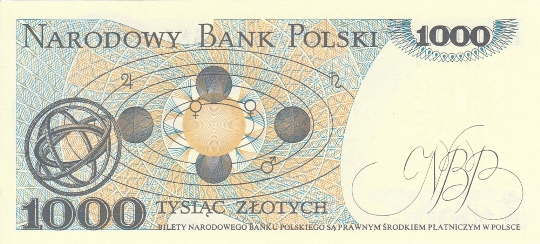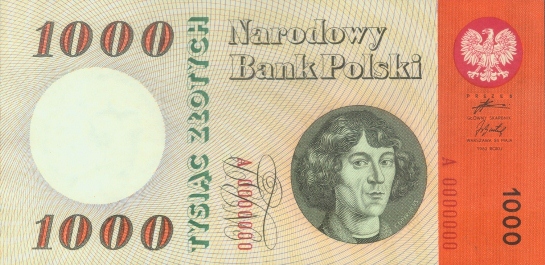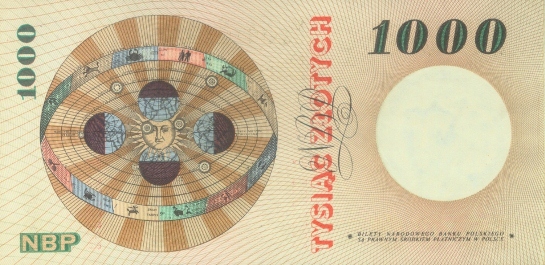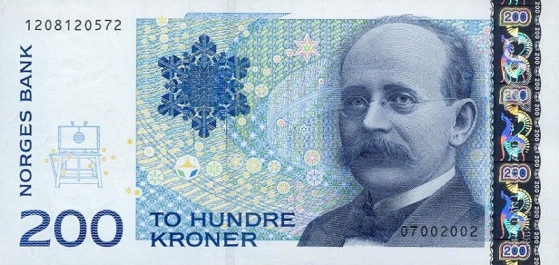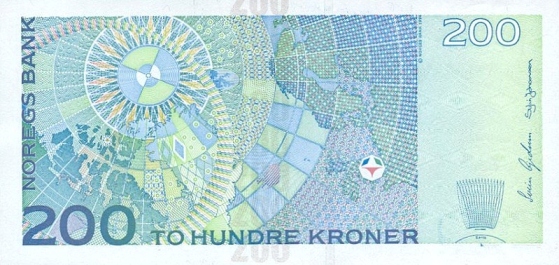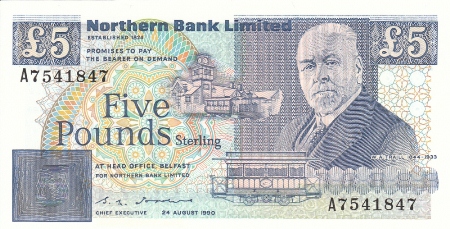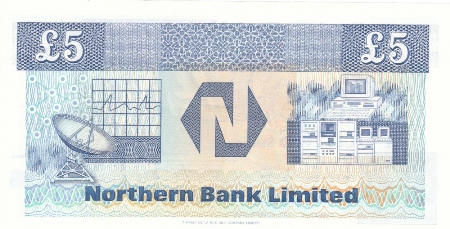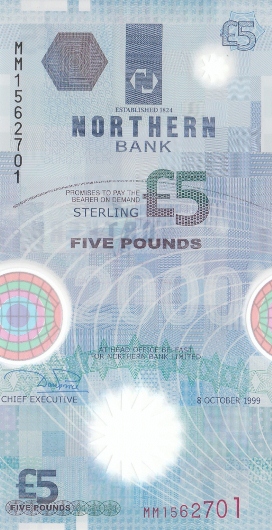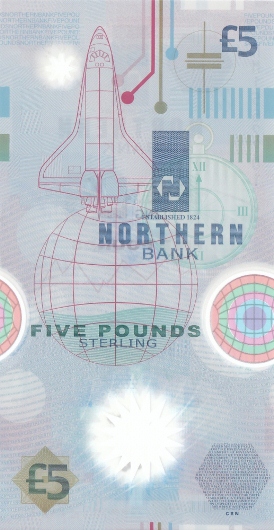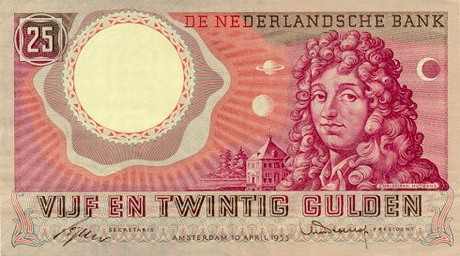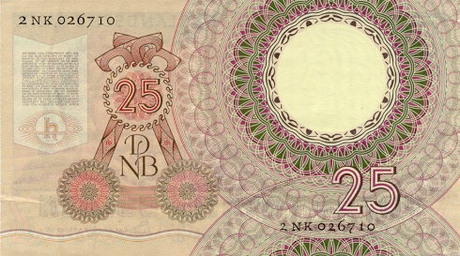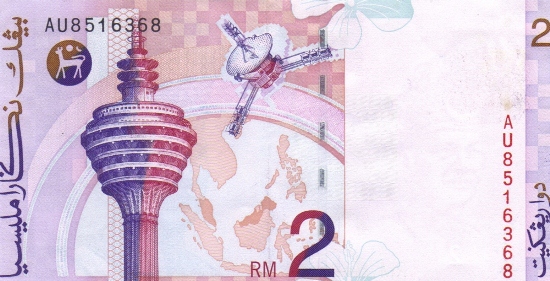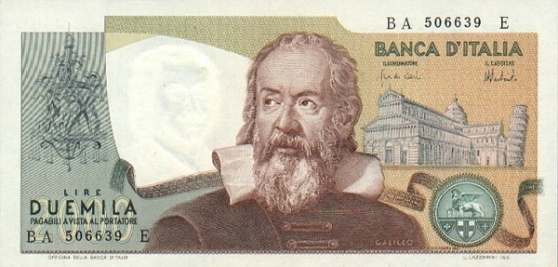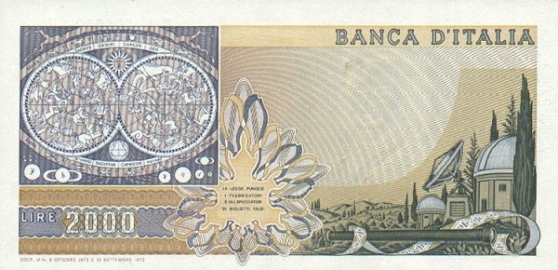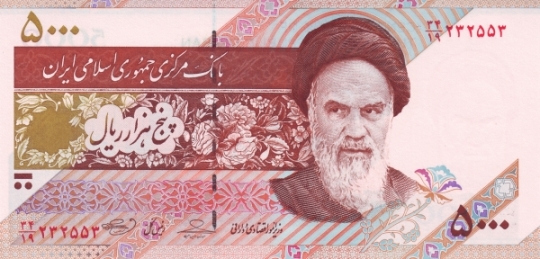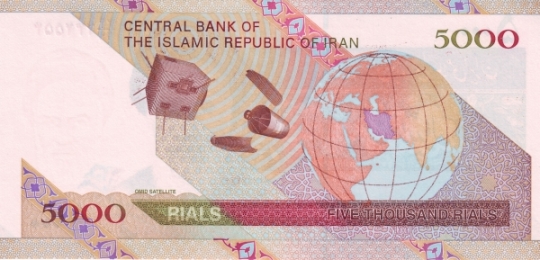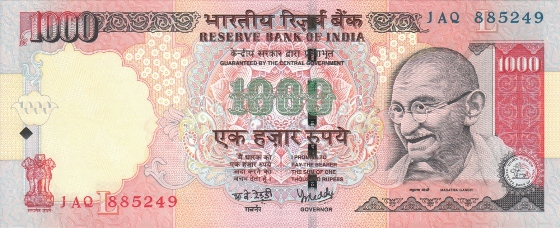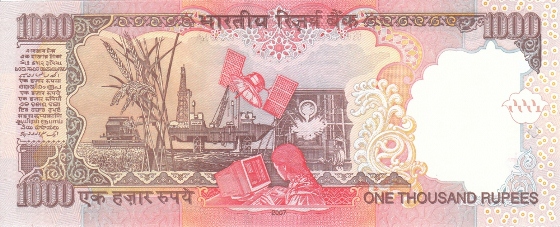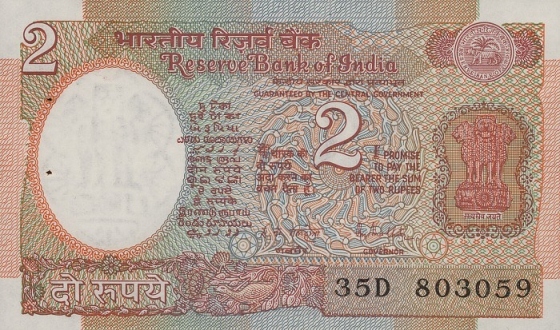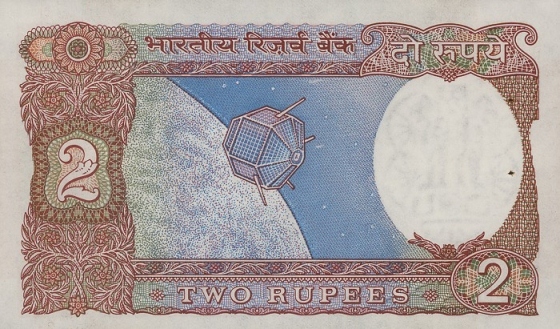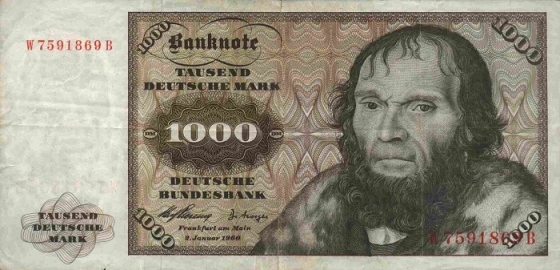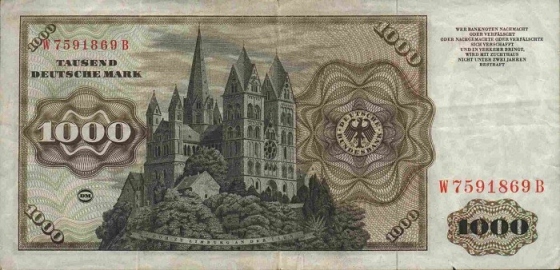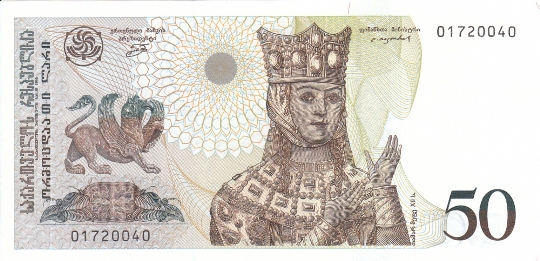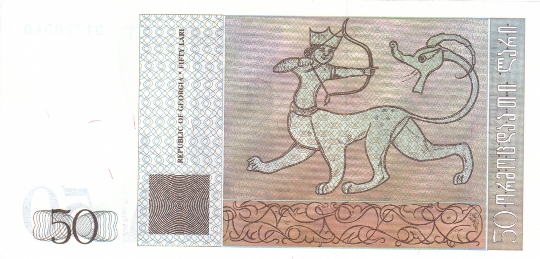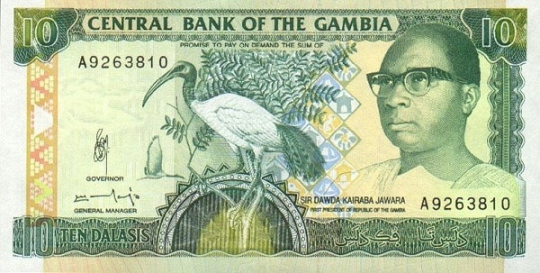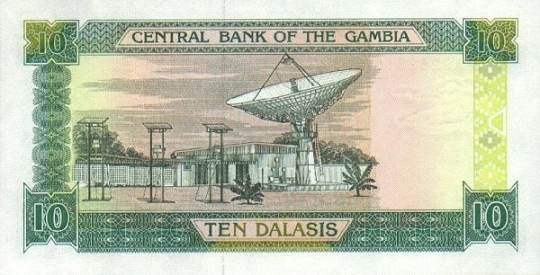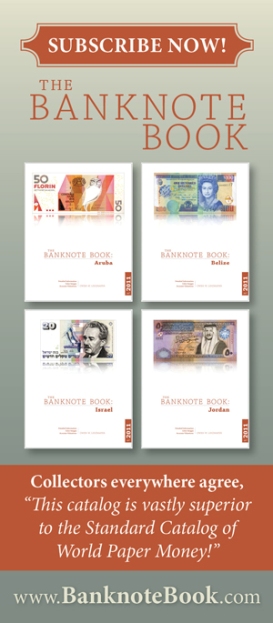West African States - 10,000 francs - 2003 - pick nr. differs by country
This 10,000 francs banknote from the West African States is issued in Ivory Coast, Benin, Burkina Faso, Mali, Niger, Senegal, Togo and Guinea-Bissau. The notes in this 2003 series all have different themes. This highest denomination has telecommunication as its theme which is symbolised by images of a satellite and a satellite dish.
United States of America - 5/10/25/50 cents - 1969 - PM75/PM76/PM77/PM78
Military payment certificates, or MPC, was a form of currency used to pay U.S. military personnel in certain foreign countries. It was used in one area or another from a few months after the end of World War II until a few months after the end of U.S. participation in the Vietnam War, from 1946 until 1973.
Thirteen series of MPC were issued between 1946 and 1973, with varied designs often compared to Monopoly money due to their colors. After the official end of U.S. participation in the Vietnam War in early 1973, the only place where MPC remained in use was South Korea. In autumn of 1973, a surprise conversion day was held there, retiring MPC and substituting greenbacks. MPC was never again issued, and the concept lay dormant until the late 1990s, when it was revived somewhat in the form of a Stored Value Card system, used by U.S. armed forces in Iraq.
This series from 1969 show an astronaut on the back of the notes conducting a spacewalk above planet Earth. The first spacewalk by an American astronaut was done in 1965 by Ed White, about three months after kosmonaut Alexey Leonov performed the very first spacewalk ever.
You can see the rest of the notes after the click:
Read More
United Kingdom - 1 pound - 1978-1984 - P377
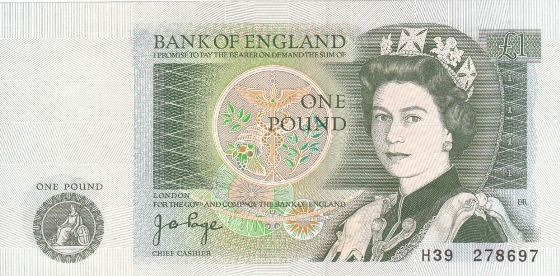
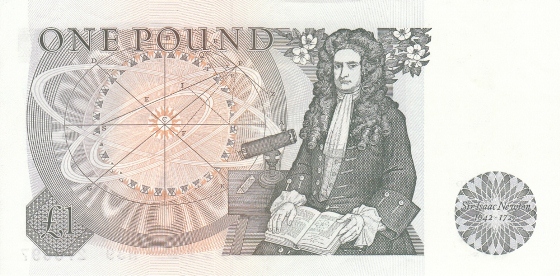
The back of this 1 pound note from the United Kingdom shows one of the most famous scientists of all time: Sir Isaac Newton (1642-1727). He was a physicist and mathematician and a key figure in the scientific revolution. His book Philosophiæ Naturalis Principia Mathematica ("Mathematical Principles of Natural Philosophy"), first published in 1687, laid the foundations for most of classical mechanics. Newton's Principia formulated the laws of motion and universal gravitation that dominated scientists' view of the physical universe for the next three centuries. It also demonstrated that the motion of objects on the Earth and that of celestial bodies could be described by the same principles. By deriving Kepler's laws of planetary motion from his mathematical description of gravity, Newton removed the last doubts about the validity of the heliocentric model of the cosmos. Newton built the first practical reflecting telescope. Besides his scientific career he also served the British government as Warden and Master of the Royal Mint.
The back of this fine note shows Newton next to an image of a heliocentric solar system. We can also see his telescope.
Turkey - 5 lira - 2009 - P222
The front of this notes depicts, like all Turkish notes, President Mustafa Kemal Atatürk (1881-1938). The reverse shows Prof. Dr. Aydin Sayili (1913-1993) along with diagrams of the solar system, symbols of an atom and DNA. Sayili was a Turkish historian of science. He was interested in many areas of science history, mainly the history of astronomy and conducted unique studies in this field. In 1960 he published his masterpiece "Observatory in Islam and Its General Place in the History of the Observatory".
Tunisia - 10 dinars - 2005 - P90
This 10 dinars note from Tunisia shows the El Abidine Mosque in Carthage on the front as well as a portrait of the Phoenician princess Elyssa, founder of Carthage. The back shows a satellite dish next to the Roman ruins in Dougga, linking the past and present of Tunisia.
Thailand - 50 baht - 2004 - P112
Thai banknotes usually honour the present and past monarchs. This 50 baht note has the present King Bhumibol Adulyadej in the uniform of the Supreme Commander of the Armed Forces on the front. The back shows King Mongkut (1804-1868), who is most famous in the West for being the king depicted in the movie "The King and I". His full name is Phra Bat Somdet Phra Poramenthra Maha Mongkut Phra Chom Klao Chao Yu Hua, so let's stick to King Mongkut.
During his reign, the pressure of Western expansionism was felt for the first time in Siam. Mongkut embraced Western innovations and initiated the modernization of Siam, both in technology and culture, earning him the nickname "The Father of Science and Technology" in Siam. On the banknote we can see a telescope as a symbol of this scientific attitude.
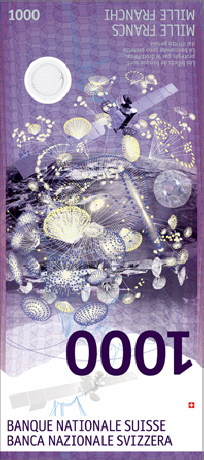
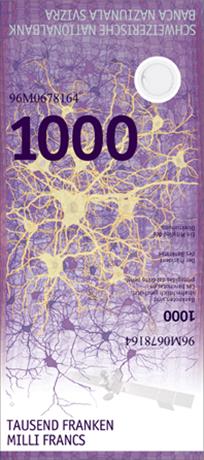 These Swiss 1000 francs notes are part of a series which has been chosen by the Swiss National Bank as the new series of banknotes for the future. The final design will however be a little different from the one proposed here by designer Manuela Pfrunder. In this note we can see a satellite but if this will still be present in the final design is unknown at this moment. The final design won't be shown until shortly before the release of the new series (in 2015 at the earliest). The rest of the series by Pfrunder can be viewed here.
These Swiss 1000 francs notes are part of a series which has been chosen by the Swiss National Bank as the new series of banknotes for the future. The final design will however be a little different from the one proposed here by designer Manuela Pfrunder. In this note we can see a satellite but if this will still be present in the final design is unknown at this moment. The final design won't be shown until shortly before the release of the new series (in 2015 at the earliest). The rest of the series by Pfrunder can be viewed here.
It is however remarkable to know that this wasn't the winner of the design competition: she won the 2nd prize behind winner Manuel Krebs. His entire series can be seen here. But I would like to point specifically to his beautiful 200 francs note:
Switzerland - 10 francs - 1981 - P53
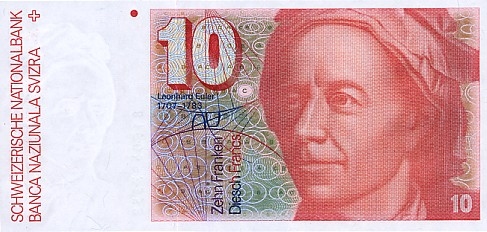
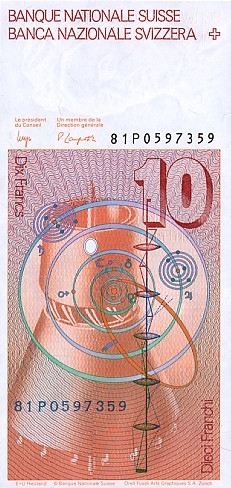
This Swiss 10 francs banknote depicts the Swiss mathematician and physicist Leonhard Euler (1707-1783). He made important discoveries in fields as diverse as infinitesimal calculus and graph theory. He also introduced much of the modern mathematical terminology and notation, particularly for mathematical analysis, such as the notion of a mathematical function. He is also renowned for his work in mechanics, fluid dynamics, optics, and astronomy. His accomplishments in astronomy include determining with great accuracy the orbits of comets and other celestial bodies, understanding the nature of comets, and calculating the parallax of the sun. In addition, Euler made important contributions in optics. He disagreed with Newton's corpuscular theory of light in the Opticks, which was then the prevailing theory. His 1740s papers on optics helped ensure that the wave theory of light proposed by Christiaan Huygens would become the dominant mode of thought, at least until the development of the quantum theory of light.
The back of the note shows a water turbine, the solar system and a scheme of propagation of rays of light passing through lenses.
South Korea - 10,000 won - 2007 - P56
The front of this 10,000 won note from South Korea shows Sejong the Great (1397-1450), the fourth king of the Joseon Dynasty and the creator of the Hunminjeongeum (the Korean script). The back shows the Honcheonsigye. This is an armillary sphere (a spherical astrolabe) of an astronomical clock that's located in front of the statue of king Sejong. We can also see an observatory telescope. In the background is the Cheonsang Yeolcha Bunyajido: a 14th-century Korean star map in the Joseon Dynasty.
South Korea - 10 won - 1965 - P33
The front of this 10 won banknote from South Korea shows Cheomseongdae, the astronomical observatory in Gyeongju. The name literally means "Star Gazing Tower." Cheomseongdae is the oldest surviving observatory in East Asia. It dates to the 7th century to the time of kingdom of Silla, which had its capital in Gyeongju.
Slovakia - 5000 korun - 1995-2003 - P29/33/40/43
This beautiful note shows on the front an image of Milan Rastislav Štefánik, a Slovak politician, diplomat, and astronomer. He graduated in 1904 with a doctor’s degree in philosophy and with thorough knowledge of astronomy (he finished his studies with a thesis in astronomy). He wrote his thesis about a star which was discovered in the Cassiopeia constellation in 1572. In 1904, he went to Paris to find a job in astronomy with the recommendation of a Czech professor who was known in Paris. Initially, he had no money and no command of French, but was nevertheless able to obtain a job at the famous Observatoire de Paris-Meudon, whose director, Pierre Janssen (one of the co-founders of astrophysics), saw Štefánik’s talent. Štefánik owed to Janssen and Camille Flammarion his social, political and scientific career. The observatory was the most important centre for astronomy at this time which meant a huge prestige in his job.
Since 1908, he had been charged by the French authorities with astronomic and meteorological observations (mainly observations of sun eclipses) and political tasks in various countries all over the world. Štefánik dealt with astrophysics, solar physics and became well known for his spectral analysis of the sun's corona. In World War I he served as general in the Franch army (and also as the Czechoslovak Minister of War). After the war when he was in the middle of diplomatic fights with several countries, his plane crashed when he was on the way back to the city of Bratislava.
On the front are elements printed on the left side of Štefánik's portrait which illustrate the sun and the moon. The back of the banknote shows Štefánik's grave on Bradlo Hill. The printed design is overlapped by part of the Great Bear constellation (Ursa major).
Slovenia - 50 tolarjev - 1992 - P13
Baron Jurij Bartolomej Vega (1754–1802) was a Slovene mathematician, physicist and artillery officer. Although he worked in the subjects of ballistics, physics and astronomy, his major contributions are to the mathematics of the second half of the 18th century. The front of this note shows an image of him and a drawing from Vega's "Treatise on the Sphere". The back shows the solar system and the Slovenian Academy of Sciences and Arts.
Singapore - 1 dollar - 1987 - P18
This nice banknote from Singapore is a 1 dollar note showing the Sentosa Satellite Earth Station, the first satellite station in Singapore.
Sierra Leone - 1000 leones - 1993/2002 - P20/24
Sierra Leone has issued these two 1000 leones notes with similar designs but different colors showing a satellite dish antenna on the back. This is the note from 1993. Click below for the one from 2002.
Read More
Rwanda - 2000 francs - 2007 - P32
This note from Rwanda shows a satellite dish next to an antenne used for communications. The back shows coffee beans.
Romania - 2000 lei - 1999 - P111
Issued on the occasion of the total solar eclipse on 11 August 1999, which was best visible from the territory of Romania. The denomination of 2000 lei also symbolizes the then-approaching year 2000. This is the first Guardian polymer bank note issued in Europe. On the front a depiction of our solar system with the sun and the nine planets. On the back a map of Romania in Romanian flag colors (blue, yellow, and red) and the depiction of the area where the solar eclipse was best visible.
In order to generate interest with currency collectors, the BNR also issued special commemorative folders with the banknotes. These were limited to 1 million pieces and each one contained a special, low-numbered banknote with the series001A.
Poland - 1000 zlotych - 1982 - P146
Nicolaus Copernicus (1473-1543) was a Polish mathematician and astronomer who formulated a heliocentric model of the universe which placed the Sun, and not the Earth, in the center. The publication of Copernicus' book, De revolutionibus orbium coelestium (On the Revolutions of the Celestial Spheres), just before his death in 1543, is considered a major event in the history of science. It began the Copernican Revolution and contributed importantly to the scientific revolution. His image appears on two Polish banknotes of 1000 zlotych.
This note from 1982 shows Copernicus on the front and a model of a heliocentric system on the back. You can find the other Corpernicus note here.
Poland - 1000 zlotych - 1965 - P141
Nicolaus Copernicus (1473-1543) was a Polish mathematician and astronomer who formulated a heliocentric model of the universe which placed the Sun, and not the Earth, in the center. The publication of Copernicus' book, De revolutionibus orbium coelestium (On the Revolutions of the Celestial Spheres), just before his death in 1543, is considered a major event in the history of science. It began the Copernican Revolution and contributed importantly to the scientific revolution. His image appears on two Polish banknotes of 1000 zlotych.
This one from 1965 shows an image of an heliocentric system on the back along with the zodiac. You can find the other Copernius note here.
Norway - 200 kroner - 1994-2014 - P48/50
Last night we could see a phenomenon which is pretty rare in The Netherlands but occurs more often in countries like Norway: Aurora Borealis, or northern lights. This Norwegian banknote of 200 kroner features a portrait of Norwegian scientist Kristian Birkeland (1867-1917).
Birkeland organized several expeditions to Norway's high-latitude regions where he established a network of observatories under the auroral regions to collect magnetic field data. The results of the Norwegian Polar Expedition conducted from 1899 to 1900 contained the first determination of the global pattern of electric currents in the polar region from ground magnetic field measurements. The discovery of X-rays inspired Birkeland to develop vacuum chambers to study the influence of magnets on cathode rays. Birkeland noticed that an electron beam directed toward a magnetised terrella was guided toward the magnetic poles and produced rings of light around the poles and concluded that the aurora could be produced in a similar way. He developed a theory in which energetic electrons were ejected from sunspots on the solar surface, directed to the Earth, and guided to the Earth's polar regions by the geomagnetic field where they produced the visible aurora. This is essentially the theory of the aurora today.
The front of the note shows northern lights rising upwards to the North Star. Also visible are the Little Bear (Ursa Minor) and the Big Dipper constellations. Birkeland's Terrella is shown on the left. On the back of the note is a map of the North Polar region. Northern lights are visible along the coast of northern Norway at night; they are visible over Svalbard, a Norwegian archipelago in the Arctic Ocean, during the day. We also see a depiction of Birkeland's thoughts about the orientation of electric currents in connection with the northern lights. Currents near the auroral arcs flow parallel to the ground, while those that are higher up flow along the earth's magnetic field lines. These currents are called Birkeland Currents.
Northern Ireland - 5/10/20/50/100 pounds - 1988-1990 - P193-197
The 1988 series of the Northern Bank in Northern Ireland is a series of 5 denominations with similar backs. On the back we can see a satellite dish antenna on the left. Following the £26.5 million pound robbery in 2004 at Northern Bank's money handling centre in Belfast, Northern Bank announced, on 7 January 2005, that all its notes were to be recalled and reissued in different colours and styles, and using the bank's new logo. The other denominations can be viewed after the click.
Read More
Northern Ireland - 5 pounds - 2000 - P202
This commemorative issue from Northern Ireland, issued by the Northern Bank in 2000, is a little bit bizarre. Because why is there an American Space Shuttle on a banknote from Northern Ireland? The polymer banknote was issued to commemorate the new milennium and shows the ascent of mankind. From the folder in which some of the banknotes were issued:
On the front at the foot, the beginning of the Universe, incorporating an Alpha motif. Moving up, we see the birth of our solar system with the Earth as a transparent coloured disc and the advent of Christianity depicted by the Star of Bethlehem in the top right corner. On the reverse, the large star at the foot now represents our sun and, as we travel upwards through waves of time, we reach our world, where man has conquered both land and sea. With the watch again representing time (its hand set at midnight) we are marking a new beginning, reaching through technology back towards space and the stars where it all began.
The space shuttle can be seen as a representation of mankind's goal to reach for the stars.
The Netherlands - 25 gulden - 1955 - P87
Isn't that nice? A banknote from my own country of The Netherlands! Depicted is the dutch scientist Christiaan Huygens (1629 - 1695). He was a prominent mathematician, natural philosopher, astronomer, physicist, probabilist and horologist. His work included early telescopic studies of the rings of Saturn (which he discovered) and the discovery of its moon Titan, the invention of the pendulum clock and other investigations in timekeeping. All of these can be seen on the front and back of this nice note.
Malaysia - 2 Ringgit - 1996 - P39
The back of this 2 ringgit note from Malaysia shows the MEASAT-1 satellite which was launched in 1996. The image of the satellite is not entirely correct however since the image shows three identical booms. This type of satellite however (the Pioneer 10/11-type) has actually two booms and a separate third longer and much slimmer boom.
Italy - 2000 lire - 1973-2002- P103
Talk about a banknote with a lot of imagery! What can we see on this 2000 lire note from Italy? On the front is the image of Galileo Galilei (1564 - 1642). On the back it shows a depiction of the landscape of Arcetri and the Arcetri Astrophysical Observatory, Galileo's telescope and a seventeenth century English celestial map depicting planets, constellations and signs of the Zodiac.
Galileo Galilei was an Italian physicist, mathematician, astronomer, and philosopher who played a major role in the Scientific Revolution. His achievements include improvements to the telescope and consequent astronomical observations and support for Copernicanism. Galileo has been called the "father of modern observational astronomy", the "father of modern physics", the "father of science" and "the Father of Modern Science".
His contributions to observational astronomy include the telescopic confirmation of the phases of Venus, the discovery of the four largest satellites of Jupiter (named the Galilean moons in his honour), and the observation and analysis of sunspots. Galileo also worked in applied science and technology, inventing an improved military compass and other instruments. Galileo's championing of heliocentrism was controversial within his lifetime, when most subscribed to either geocentrism or the Tychonic system.
It's almost impossible for me to describe all the contributions to science and discoveries he made, so I will just refer you to the extensive wikipedia article on his life.
Iran - 5000 rials - 2009 - P150
This 5000 rials note from Iran is all about astronomy. On the back of the note we see the Omid satellite which was launched by the Safir 2 carrier rocket (also depicted on the note). The two spacecrafts are shown above Earth with a highlighted Iran. The rocket with the satellite was launched on 2 February 2009 to coincide with the 30th anniversary of the Iranian revolution.
President Ahmadinejad said the satellite was launched to spread "monotheism, peace and justice" in the world. It is however a data-processing satellite for research and telecommunications. Omid was reported to have successfully completed its mission without any problems. It completed more than 700 orbits over seven weeks.
India - 1000 rupees - 2000 - P94
This banknote from 2000 shows images representing India's growing economical power. One of those images is a satellite, showing India's steps into space. Since launching its first satellite in 1975, India has put several satellites into orbit.
India - 2 rupees - 1976-1997 - P79
The back of this Indian 2 rupees note from 1976 shows the Aryabhata satellite. It was India's first satellite and it was launched by the Soviet Union on 19 April 1975. It was built to conduct experiments in X-ray astronomy, aeronomics, and solar physics. The spacecraft was a 26-sided polygon 1.4 m in diameter. All faces (except the top and bottom) were covered with solar cells. A power failure halted experiments after 4 days in orbit. All signals from the spacecraft were lost after 5 days of operation. The satellite reentered the Earth's atmosphere on 11 February 1992.
Federal Republic of Germany - 1000 mark - 1960-1980 - P24/36
The face on this 1000 mark note from the Federal Republic of Germany (or West-Germany) is of the German polymath Johannes Schöner (1477 - 1547). He was a priest, astronomer, astrologer, geographer, cosmographer, cartographer, mathematician, globe and scientific instrument maker and editor and publisher of scientific tests. When he lived in Bamberg, he owned his own printing company and published many maps and globes. The very first printed globe of the sky was made in his workshop in 1515.
In his own time he enjoyed a European wide reputation as an innovative and influential globe maker and cosmographer and as one of the continents leading and most authoritative astrologers. Schöner had also made still unpublished data of Mercury observations from Walther available to Copernicus, 45 observations in total, 14 of them with longitude and latitude. Copernicus used three of them in "De revolutionibus", giving only longitudes, and falsely attributing them to Schöner. The values differed slightly from the ones published by Schöner in 1544. In 1538, Georg Joachim Rheticus, a young professor of mathematics at Wittenberg, stayed for some time with Schöner who convinced him to visit Nicolaus Copernicus in Frauenburg. In 1540, Rheticus dedicated the first published report of Copernicus work, the Narratio prima, to Schöner. As this was well received, Copernicus finally agreed to publish his main work, and Rheticus prepared Copernicus' manuscript for printing. In Nürnberg, Schöner published in 1544 the astronomical observations of Regiomontanus and Walther, as well as manuscripts of Regiomontanus, which had been in the hand of Walther. A crater on Mars is named in his honor.
Georgia - 50 lari - 1995-2011 - P58/66/73
Since 1995 Georgia has issued several versions of its 50 lari note. On the back of the note we find an artistic interpretation of the astrological sign Sagittarius.
Gambia - 10 Dalasis - 1991-2001 - P13/17/21
The African nation of Gambia has issued several 10 dalasis notes with a satellite dish on the reverse. Above is the first one from 1991 (P13). Click below to see the other two issues from 1996 (P17) and 2001 (P21).
Read More
|
|
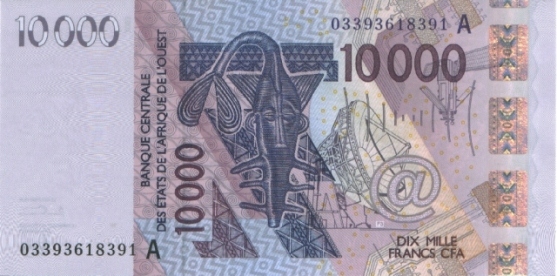

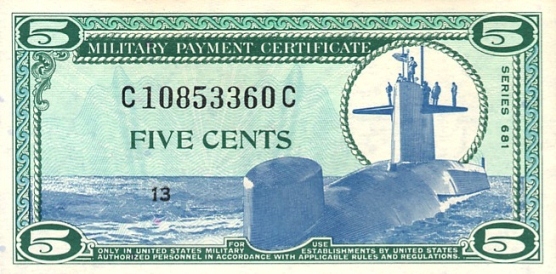
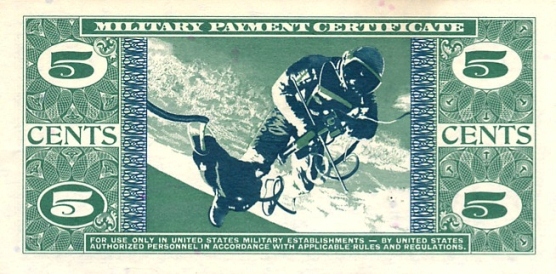


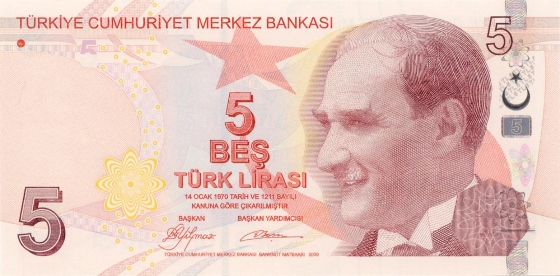
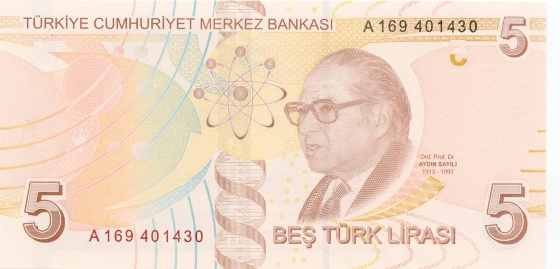
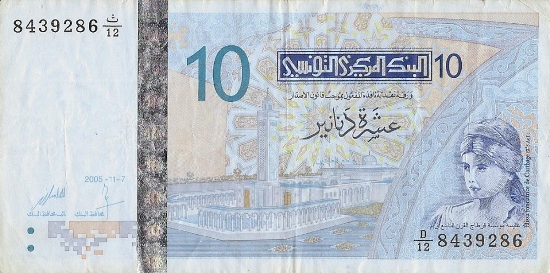
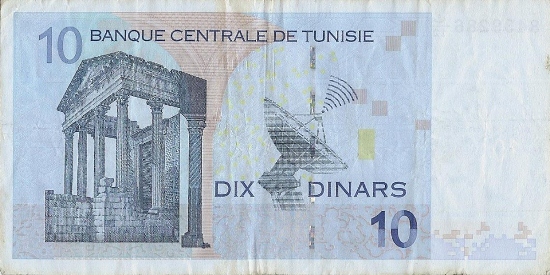
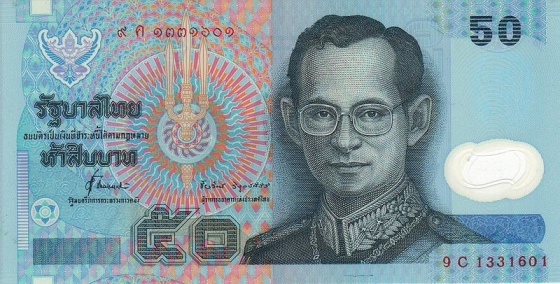
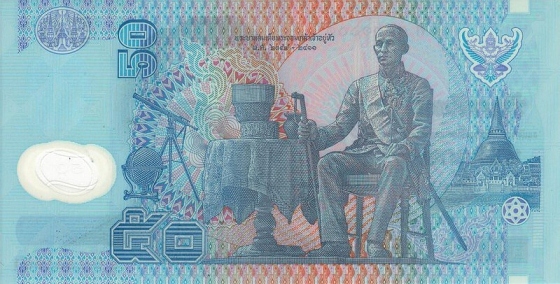

 These Swiss 1000 francs notes are part of a series which has been chosen by the
These Swiss 1000 francs notes are part of a series which has been chosen by the 